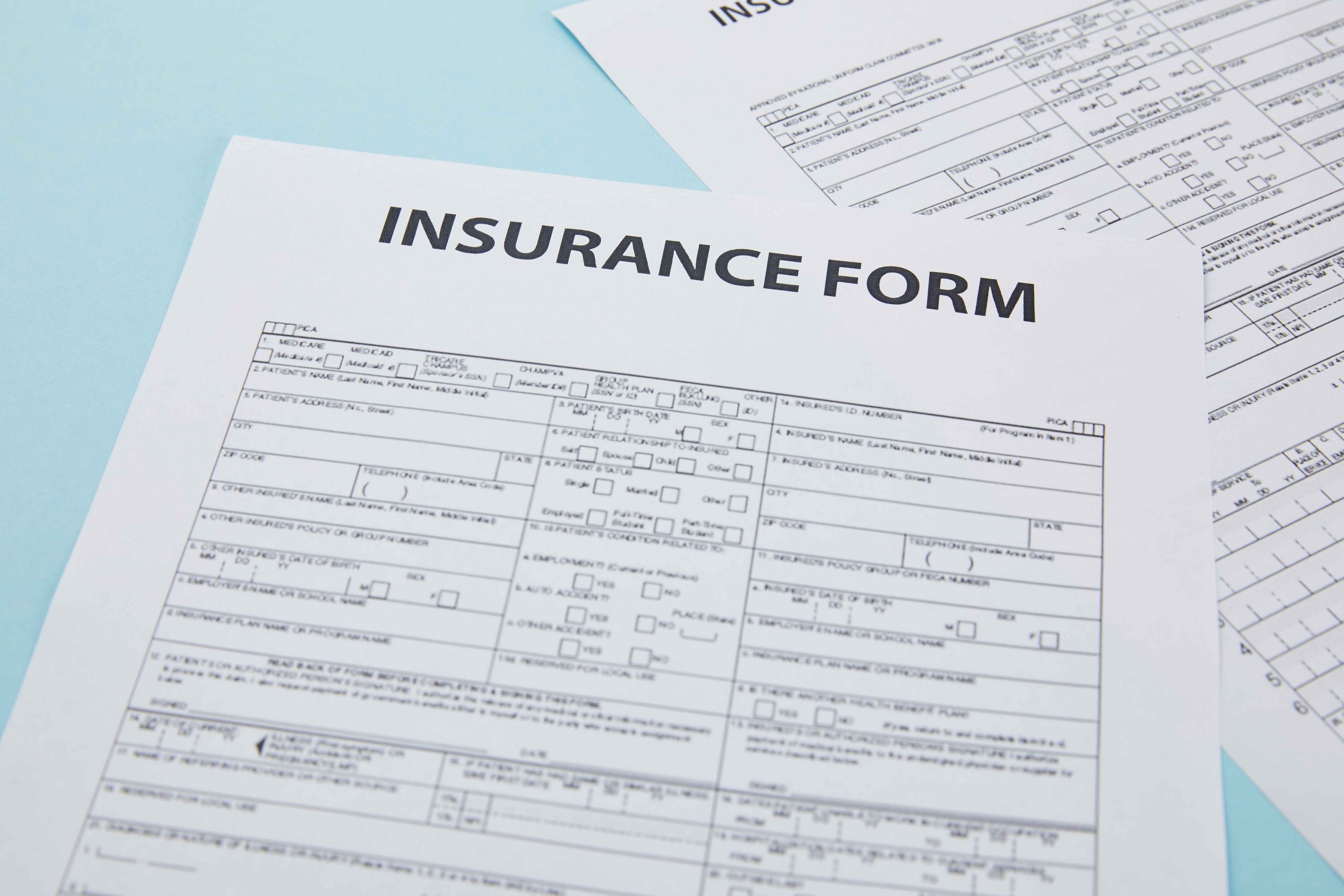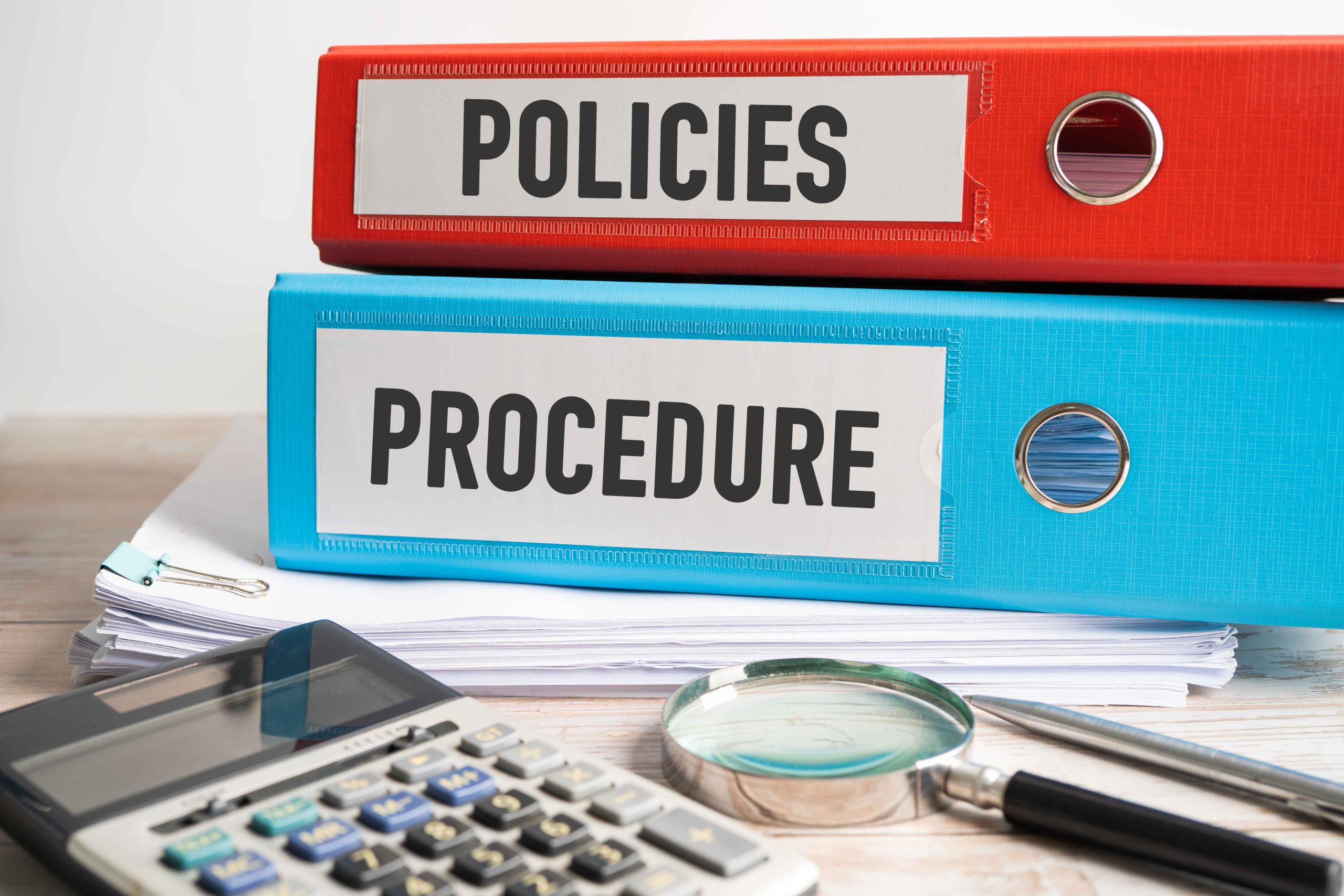
Liability Insurance for Building Designers & Architects
- Key Takeaways
- Why You Need Liability Insurance
- Key Insurance Types
- Navigating Policy Details
- The Cost vs. The Catastrophe
- Future-Proofing Your Practice
- Proactive Risk Management
- Conclusion
- Frequently Asked Questions
- What is liability insurance for building designers?
- Why is liability insurance important for building designers?
- What types of liability insurance do building designers need?
- How much does liability insurance for building designers cost?
- Does liability insurance cover mistakes in design plans?
- Can liability insurance help with legal fees?
- How can building designers reduce their insurance costs?
Key Takeaways
- Liability insurance is crucial for building designers, providing coverage for personal and business assets in the event of legal claims resulting from design mistakes, negligence or unforeseen incidents.
- Obtaining adequate liability insurance establishes client confidence, exhibits professionalism, and meets legal obligations in your jurisdiction or profession.
- By choosing the right kinds of insurance, like professional indemnity and general liability, it offers customized protection for the specific risks of your particular design work and business operations.
- Knowing policy specifics, such as coverage limits, exclusions, and claims-made versus occurrence policies, is essential for optimizing financial protection and preventing coverage gaps.
- Purchasing liability insurance is the best kind of business decision proactive, and non-negotiable because it can prevent you from encountering the financial devastation that imperils long-term operational viability.
- By regularly revising your insurance coverage, contracts, and risk management strategies, you future-proof your practice against advancing technologies, sustainability requirements, and changing client expectations.
Building designers’ liability insurance protects against claims by clients or third parties for errors, omissions, or hazards associated with design services. Even building designers are often exposed to claim risks from project errors or contract disputes.
To be safe, many purchase insurance that covers legal fees and settlements. Policy choices vary based on project magnitude and jurisdiction.
To assist you in selecting the optimal plan, the subsequent portion below dissects the important features and specifics you must consider.

Why You Need Liability Insurance
Liability insurance is an essential tool for building design professionals. It provides a buffer for your wallet and public image while ensuring compliance with insurance requirements in your region. This protection isn’t a luxury it’s a fundamental component of an intelligent risk management strategy that safeguards against potential claims and liability risks.
1. Protect Your Assets
A lawsuit can come on quick, and claim costs can be in the hundreds of thousands, sometimes even millions. If you confront a client who slips on your office or someone alleges your design damaged a third party’s property, you’d risk your business and personal assets. Liability insurance protects you from paying these high out-of-pocket expenses.
It serves as a buffer, allowing you to maintain your business when lawsuits hit. If an innocent wet floor results in an injury claim and lawsuit, the insurance will cover the claim and associated costs, preventing your business from a major financial blow. Choose a policy that matches the hazards associated with your offerings, so you’re not left vulnerable when the unexpected occurs.
2. Secure Client Trust
Clients seek out designers who are responsible. Demonstrating that you have liability insurance establishes confidence, demonstrating that you stand behind your work and make efforts to safeguard both parties. Bragging about your coverage can predispose clients to do business with you.
This can distinguish you in a competitive marketplace. Some clients will even request proof of insurance before you sign a contract, so having it on hand gives you a leg up. Over time, this trust can develop into deep business relationships, as customers recognize you are dependable and committed to their security.
3. Meet Legal Requirements
Lots of locations need constructing designers to have specific types of liability insurance. Local law and licensing boards could request evidence prior to beginning a project or renewing your practice license. Staying compliant keeps you clear of fines and legal trouble.
Being uninsured not only invites fines, but can stop you from working. Rules evolve, so review your coverage frequently to ensure you satisfy all new areas of the trade and avoid surprises.
4. Cover Human Error
No project is mistake-proof. Even minor mistakes from design errors to overlooked details can result in expensive claims. Liability insurance protects against this sort of human error, including omissions and negligence.
If you bust some costly equipment on a site visit or a design blunder causes client attrition, insurance takes the hit, so you don’t have to. This backup allows you to concentrate on business, not the worry of screwing up.
5. Ensure Business Survival
Insurance isn’t just for when sh*t hits the fan, it’s an investment in your business’s sustainability. Claims or lawsuits can throw off your operation or exhaust your resources. With insurance, even if a big claim hits you, your business can keep going.
It forces you to look to the future, codifying risk management as a central element of your business strategy. When you select coverage that suits your needs, you position your business for sustainable growth, regardless of what lies ahead.

Key Insurance Types
Building designers face numerous risks, including allegations of negligence and property damage, making tailored insurance coverage solutions essential. A key architect insurance portfolio will help mitigate legal and financial risks, facilitate project continuity, and ensure compliance with insurance requirements and local licensing requirements.
Insurance Type | Main Purpose | Typical Coverage Scope |
|---|---|---|
Professional Indemnity | Errors, omissions, or negligence in services | Legal costs, settlements, damages |
General Liability | Third-party injury or property damage | Medical costs, repairs, legal defense |
Workers’ Compensation | Employee injury or illness | Lost wages, medical expenses |
Builder’s Risk | Construction works in progress | Building materials, equipment, project |
Home Warranty | Major defects in new homes | Structural repairs (certain time frame) |
Public Liability | Third-party claims (often required by contract) | Injury, property damage |
Business Owner’s Policy | Combined property and liability protection | General liability, business property |
Commercial Auto | Business vehicle accidents | Repairs, medical bills, legal claims |
Umbrella Insurance | Extra coverage above other policies | Increased liability limits |
Professional Indemnity
Professional indemnity insurance is essential if you are a designer providing advice, drawings or technical guidance. It protects you against claims from clients who say you made a mistake, or forgot something, or were negligent in your work.
Say a design flaw causes expensive repairs or delays, this policy can pay legal fees, settlements or damages. Not all indemnity policies are the same, so review what is included: some may cover only legal defense, while others pay both defense and the settlement itself.
Review the coverage limits to ensure they match the scale and complexity of your projects. A boutique residential designer might require less coverage than a company that tackles commercial bulk work. Consider your services. If you frequently sign off on compliance or oversee construction, your risks are high and should be met with a high policy limit and broad language in your coverage.
General Liability
General liability coverage safeguards you from third party allegations of bodily harm or property damage. This is typically the initial policy a build or design firm purchases. For instance, if a client slips on-site or their property is damaged due to your work, general liability can cover medical bills or repair expenses.
That’s different from professional indemnity, as it covers wearing accidents instead of errors in professional decision-making. Some companies tack on specific covers, such as product and/or personal injury, depending on their business.
Remember to read the fine print, as some policies exclude subcontractor action or certain types of projects. See if higher-risk projects like multi-storey buildings or public spaces need more customized general liability terms.
Other Considerations
- Workers’ comp is mandatory in most jurisdictions for anyone who has employees, covering medical expenses and lost wages in case your crew gets hurt at work.
- Builder’s risk insurance, for example, is a key policy for anyone doing new construction to guard against materials and equipment being damaged by fire, theft or weather, particularly if the project is above a certain value.
- Business owner’s policies (BOP) combine general liability and property coverage, which can be an economical means for smaller companies to obtain wide-ranging protection.
- Commercial auto insurance is important if you utilize vehicles for site visits or material transportation, protecting against damage and injury in road accidents.
- Home warranty insurance is typically required on new builds, covering significant structural defects for up to 10 years.
- Public liability insurance isn’t always legally necessary but is often a contract term and goes a long way towards covering claims from members of the public.
- Umbrella insurance offers additional liability protection in case claims surpass your other policies’ limits, essential for high-value or risky projects.

Navigating Policy Details
Opting for professional liability insurance for building designers involves navigating essential policy details which impact both financial liability and continued protection. Most countries mandate some type of professional liability coverage once a design firm expands beyond a sole practitioner.
Policy terms, definitions and limits may differ, making it important for both architects and engineers to understand these. Industry statistics indicate nearly 40% of practitioners in this sector will encounter a claim during their career, so examining policy details carefully is important for keeping your business afloat and your mind at ease.
Still, detailed documentation such as explicit contracts, project diaries, and email threads is the foundation of a good defense should a liability suit appear, demarcating duties and the expected level of service.

Coverage Limits
Coverage limits are fundamental to any insurance policy. They determine how much your insurer will pay on claims in a policy year at most. If you design high-rises or large infrastructure projects, higher limits may be required due to the increased hazards and higher monetary stakes.
Limits should be re-examined with each new project or at minimum once a year because what a growing practice needs can change. For instance, a small residential project may warrant a $500,000 cap, whereas a large commercial building might require coverage of $5 million or more.
Insurers can assist in customizing limits to suit your risk profile. Some recommend “split limits,” which establish different ceilings for each claim and for the yearly total, while others utilize “aggregate limits.” Periodic reviews make sure your coverage still matches your business’s dimensions.
Policy Exclusions
All policies have exclusions. Typical exclusions are claims resulting from willful conduct, known issues, or specific contractual obligations. Pollution, asbestos, or data breach exclusions are common, and can leave designers exposed if not completely understood.
This could result in a claim for a building defect in connection with a known hazardous material being rejected. Make sure you haggle with your insurer to minimize or specify exclusions, particularly for risks specific to your projects.
Be sure to verify the current information, since exclusions can vary at renewal. Policy language is not always transparent, so legal review is smart for practices with intricate contracts or projects in several regions.
Claims-Made vs. Occurrence
Policies are available on a ‘claims-made’ and ‘occurrence’ basis. Claims-made coverage only help if the incident and claim occur during the policy period. Occurrence coverage covers incidents that occur during the policy term, even if the claims are made years later.
For instance, if a claim arises five years after a project is complete, occurrence policies will still cover it so long as the project occurred during the policy period. Claims-made policies, which are more frequent, frequently cheaper but demand attentiveness to coverage gaps.
TOLP policies are generally more expensive, but provide a more expansive coverage of long-tail risks. Which one you opt for varies with project deadlines, the potential for late claims, and the security of your practice.
Retroactive Dates
Retroactive date in claims-made policies set the point of how far back coverage goes. If your firm began in 2015, your retroactive date should be 2015 or earlier to prevent gaps. This is critical if you switch insurance providers or increase your coverage.
If you don’t match those retroactive dates to your business history, it will leave previous work unprotected. Talk to your insurer about any changes in your practice to keep your retroactive coverage up to date.
Check them from time to time, particularly after mergers, acquisitions, or policy rewrites. Recall, your COI must explicitly list the retroactive date amongst other essential information including policy type, effective date and endorsements.
The Cost vs. The Catastrophe
Liability insurance is a safety valve for building designers, whose risks can easily get away with them. The insurance premium can feel expensive when budgets are lean, but the cost of even one legal claim or a catastrophic event can dwarf these routine expenses. Global insured losses from floods alone between 2011 and 2020 hit $80bn double the decade before.
Catastrophes like Hurricane Ian, which racked up a minimum of $50 billion in insured losses, and California floods, which pushed losses above $31 billion, demonstrate the quick pace of cost escalation. Insurers have responded with rate hikes, with builder’s risk premiums up 15% to 20% for many projects especially wood-frame or high-risk regions.
Expense Type | Example Cost (USD) | Frequency | Potential Total |
|---|---|---|---|
Liability Insurance | $5,000–$25,000/year | Annual | $50,000–$250,000/decade |
Legal Defense (1 claim) | $100,000–$500,000 | Per lawsuit | Unlimited |
Settlement/Judgment | $250,000–$5 million+ | Per incident | Unlimited |
Uninsured Loss (catastrophe) | $1 million–$50 million+ | Rare (but severe) | Bankruptcy risk |
Calculating Premiums
Professional liability insurance premiums are a function of a lot of things. Firm size is key a small team might pay under $5,000 annually whereas a big international practice could pay north of $25,000. The kind of projects count designing hospitals or stadiums commands higher premiums than single-family houses.
Location factors in, too, as insurers consider such risks as flood zones or earthquakes. It’s savvy to shop around for quotes from various insurers. All have varying coverages, exclusions, and deductibles. Claims history counts as well. Companies with prior claims tend to cost more because the insurers consider them more risky.
An agent who knows your business can help you discover the optimal rate/coverage mix.
The Price of a Lawsuit
The lawsuit and attorney’s fees alone add up quickly. Even a small claim can run $100,000 or more in defense and court expenses. Big settlements or bad judgments run into the millions. In latent defect claims, errors from decades past suddenly become punchbowl liabilities, leaving companies vulnerable.
Other times, when you did nothing wrong, it’s expensive to battle a claim. Uninsured designers go bankrupt, particularly design build projects where one party assumes all design and construction risk. With professional liability insurance, however, you transfer this risk to the insurer, protecting your firm’s future.
A Non-Negotiable Investment
Liability insurance is mandatory. It’s a fundamental risk management for any building designer. Without it, a single big claim could ruin a business regardless of how skillful or careful the design.
With coverage, you can think about your work, not an impending catastrophe. As the insurance market tightens, securing the right coverage at the right price requires research and negotiation. Companies need to check their coverage regularly, align coverage to their existing project risks and never allow coverage to lapse.

Future-Proofing Your Practice
Liability insurance for building designers is no longer a passive instrument. The changing world of design, tech, and client needs means that future-proofing your practice requires a flexible, scalable plan. If we’re going to be honest, building designers need to consider insurance less as a parachute and more as future-proofing.
To achieve this, you must identify new risks, update practices and align coverage to evolving industry standards.
New Technology Risks
Embracing digital tools, AI-based modeling, and cloud collaboration platforms has transformed the way building designers work, but it introduces fresh hazards. For instance, a design defect resulting from a software error or a data breach compromising sensitive client documents can result in expensive lawsuits.
Professional liability insurance should specifically include liability stemming from technology failure, including cyber attacks say an employee clicking on a suspicious email that compromises project data. A claims-made policy with a retroactive date is particularly valuable, as it’s able to cover incidents from the past that might be uncovered later, helping bridge gaps in coverage as tech changes.
That said, it’s smart to stay abreast of tech trends and regulatory shifts. Some new requirements may necessitate additional protections or endorsements. Working with IT pros allows designers to understand how these digital tools affect risk and to shape conversations with brokers to customize insurance to genuine-world exposures.
Sustainable Design Liability
Green building, recycled materials, and energy-efficient systems bring their own special liabilities. As an example, a sustainable material may not satisfy safety codes, igniting litigation or claims. Insurance should cover risks related to green options, in terms of materials and constructions.
Designers should check policy wording to ensure that these are not excluded, since some insurers consider sustainable practices to be high risk. Sustainable design regulations are stringent and geographically variable, making adherence imperative.
Being aware of standards such as energy codes or green certifications helps maintain coverage relevant to local and global regulations. Risk management becomes more complex with sustainable projects, such as recording material sources or test results, but this reduces the likelihood of a claim and facilitates the claims process if one does arise.
Evolving Client Expectations
These days, clients expect design professionals to have fully up-to-date architect insurance. They might request evidence of insurance coverage, require certain limits, or demand disclosure of risk management practices. Providing insurance information establishes a foundation of trust and outlines liability expectations.
To keep up with these demands, it is essential to not just review insurance requirements but also discuss risk strategies during project negotiation. Regular engagement with clients helps designers stay attuned to shifting priorities, like increased focus on cyber protection or sustainability.
This feedback loop drives both service offerings and the insurance program adding Employers’ Non-Owned Auto Liability to cover employee use of personal vehicles, or scaling coverage as the business grows. Reviewing professional liability coverage at least annually keeps your practice future-proof and competitive as client needs evolve.

Proactive Risk Management
Proactive risk management means identifying risks and taking preemptive action to reduce or eliminate them before they become issues. For building designers, this mindset is more than just about avoiding lawsuits. It safeguards your project, reputation and work relationships.
Being clever and proactive minimizes expenses associated with cleanup, legal expenses, and harm to third parties. Key strategies for strong risk management in the design sector include:
- Crafting robust, modern contracts that establish defined responsibilities and boundaries for everyone.
- Keeping communication open and documented with clients and partners.
- Keeping meticulous records of design decisions and modifications and project information.
- Establishing site security, access restrictions and explicit warning notices.
- Holding regular safety meetings and encouraging incident reporting.
- Using technology for risk tracking, communication, and documentation.
- Communicating with local communities regarding upcoming projects to establish trust and prevent conflicts.
- Being on top of legal compliance to avoid fines, enforcement action or damage to your reputation.
Strong Contracts
A design contract shouldn’t just be about the fee and deliverables. It has to specify the scope of work, timelines, and accountability. Limiting your liability or delineating boundaries for changes are all clauses that safeguard you.
At the same time, it’s smart to slip in clauses that calm client fears e.g., how you handle disputes or design changes. Regular contract review and updating helps keep up with both local and global regulations.
Legal advice is not a nicety it makes sure your contracts stand if called into question. Such as, for instance, incorporating a term stating that the work will meet local building codes protects against regulatory fines.
Clear Communication
- Respond quickly to client questions.
- Use simple language when explaining technical details.
- Document client meetings and decisions.
- Confirm any changes in writing, such as by email.
Lucid, written communication minimises the risk of disagreements, and a checklist for every client interaction can help cover all bases. When miscommunications do occur, quick open dialogue frequently keeps them from becoming formal claims.
If a dispute escalates, a recorded history of your communications and decisions is your strongest shield.
Thorough Documentation
A methodical record-keeping approach implies jotting down each design modification, client remark and project addition. These become essential if you encounter claims or need to demonstrate that you satisfied your responsibilities.
File them such that they’re convenient to consult, particularly for projects where the devil is in the details. If you’re into technology, some sort of cloud-based project management system is ideal for centralizing and securing your documentation.
A system of periodic reviews to make sure you’re not overlooking anything important. Well documented software is not only defensive, it’s proactive risk management and tooling for improving your next project.

Conclusion
Good design work builds trust, and keeps projects safe. Liability insurance makes this real for building designers. It steps in quick when errors arise, or client allegations bring anxiety. Every policy fills holes that can cause huge damage. In my experience, reading the fine print saves money and trouble. Intelligent risk reviews and regular refreshers keep you on top of new regulations or technology. Pay attention to your policy, not just the price. Your talent counts, but smart coverage keeps your practice going when times get rough. Wish to supercharge your business muscle and serenity! Chat with a specialist, explore plans, and choose the coverage that suits your practice. Safe, savvy building.
Frequently Asked Questions
What is liability insurance for building designers?
Liability insurance for building designers, including professional liability coverage, addresses claims related to mistakes, oversights, or negligence in design services. It assists with legal expenses and damages if a client accuses your design of causing loss or harm.
Why is liability insurance important for building designers?
Liability insurance is crucial for architects and design professionals because design errors can lead to costly lawsuits. It safeguards your assets, reputation, and practice-saving operations, while also addressing client and regulatory insurance requirements.
What types of liability insurance do building designers need?
Building designers should have professional liability coverage, general liability insurance, and tailored insurance coverage solutions. These cover design errors, third-party injuries, and damages from completed projects.
How much does liability insurance for building designers cost?
Rates for architect insurance depend on location, project size, and coverage limits, typically costing between a few hundred and a few thousand euros annually. Comparing quotes helps find the right insurance between price and protection.
Does liability insurance cover mistakes in design plans?
Yup, professional liability coverage protects you from financial losses caused by any mistakes, errors, or omissions in your design work, assisting with legal fees and compensation due to clients.
Can liability insurance help with legal fees?
Yes, architect insurance typically covers legal defense expenses, settlements, and court awards associated with covered claims, assisting design professionals in mitigating the cost of claims.
How can building designers reduce their insurance costs?
Building designers can reduce their architect insurance premiums by being good risk managers, keeping good records, and selecting appropriate insurance coverage wisely. Frequent training and clear contracts help mitigate potential claims.
